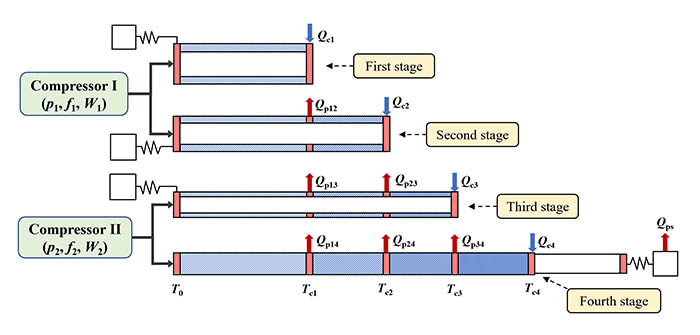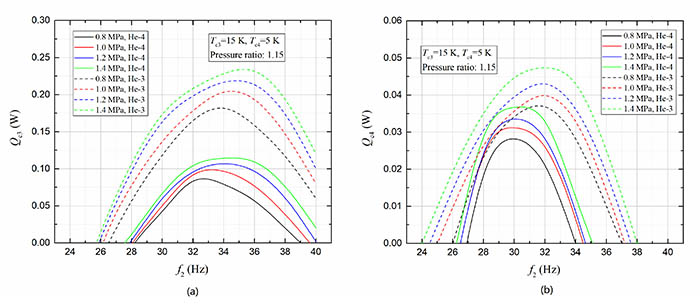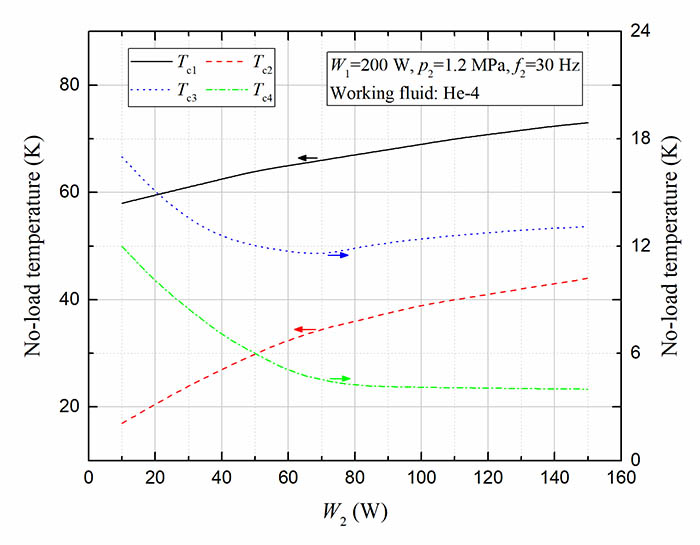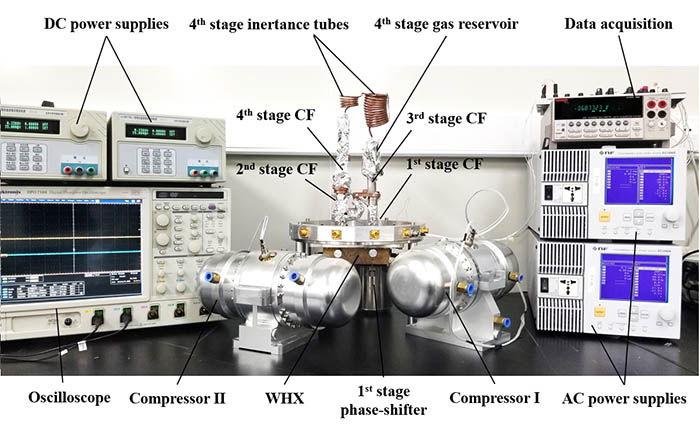Boreas Cryogenics Successfully Developed a Four-stage High-frequency 3.3 K Pulse Tube Cryocooler
Back
2019-12-05
Boreas Cryogenics successfully developed a four-stage high-frequency 3.3 K pulse tube cryocooler, which was published in Cryogenics.

Fig. 1. Temperature profile in the fourth stage CF.

Fig. 2. Schematic of the four-stage SPTC.

Fig. 3. Effects of f2 and p2 on (a) Qc3 and (b) Qc4 with a constant pressure ratio.

Fig. 4. Variations of the four cooling temperatures with W2.

Fig. 5. Photo of the actual four-stage SPTC CF.

Fig. 6. Experimental setup.
The cold end of the pulse tube cryocooler completely eliminates the moving component, achieving no-wear, extremely low vibration and theoretically infinite life. The high-frequency pulse tube cryocooler driven by the long-life linear compressor achieves high reliability and long-life of the hot end, and it is regarded as the optimal choice for the new generation of space-borne cooling technology. However, to achieve extremely-low temperatures at liquid helium temperature (4.2 K) and below, a multi-stage arrangement must be adopted to further reduce the cooling temperature and reach the extremely-low temperature through heat transfer between stages. With the increase in the number of stages, the physical mechanisms of the internal working medium and the overall system control become extremely complex, leading to few attempts at arrangements with more than three stages. Prior to this, only researchers from Lockheed Martin Advanced Technology Center (LMATC) succeeded in developing a four-stage high-frequency pulse tube cryocooler in 2006, achieving a no-load temperature of 3 K.
Based on the key achievements of the three-stage high-frequency pulse tube cryocoolers developed by ourselves, the team has systematically clarified the internal mechanisms of four-stage high-frequency pulse tube cryocoolers, achieving a cooling temperature of 3.3 K. This milestone enables us to be among the leading teams to achieve a multi-stage high-frequency 3 K pulse tube cryocooler.
This achievement lays a key foundation for the realization of cooling in extremely-low temperature ranges and its important applications in space quantum communications, quantum computing, deep space exploration, and the establishment of extremely-low temperature scientific conditions.

Fig. 1. Temperature profile in the fourth stage CF.

Fig. 2. Schematic of the four-stage SPTC.

Fig. 3. Effects of f2 and p2 on (a) Qc3 and (b) Qc4 with a constant pressure ratio.

Fig. 4. Variations of the four cooling temperatures with W2.

Fig. 5. Photo of the actual four-stage SPTC CF.

Fig. 6. Experimental setup.
Link 1 to the article:
Part A: Theoretical analyses and modeling
Link 2 to the article:
Part B: Experimental verifications
Back
